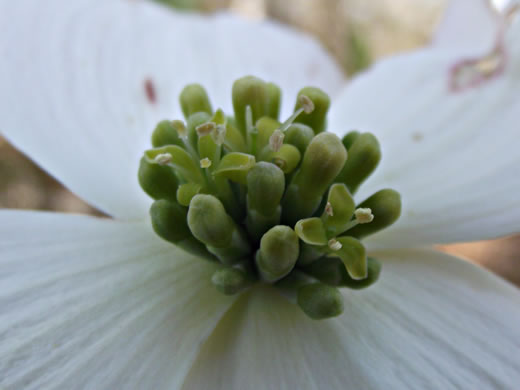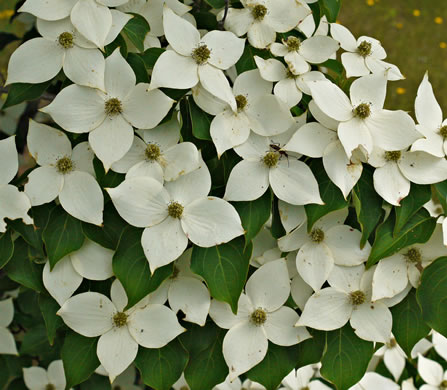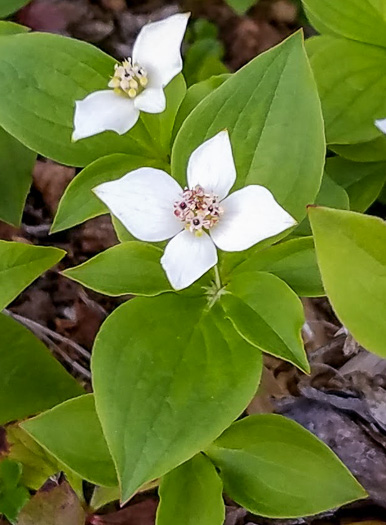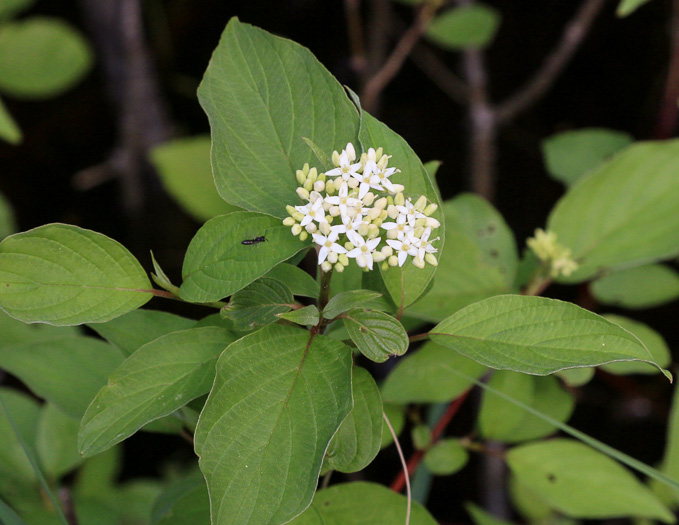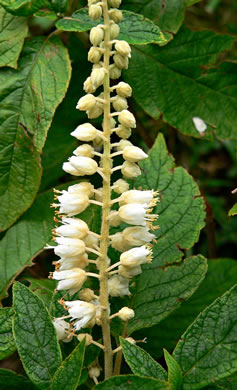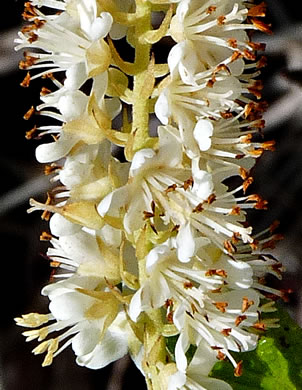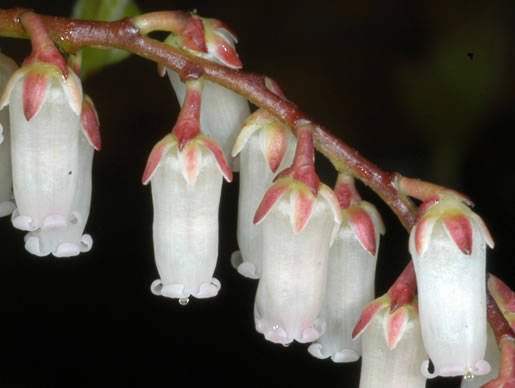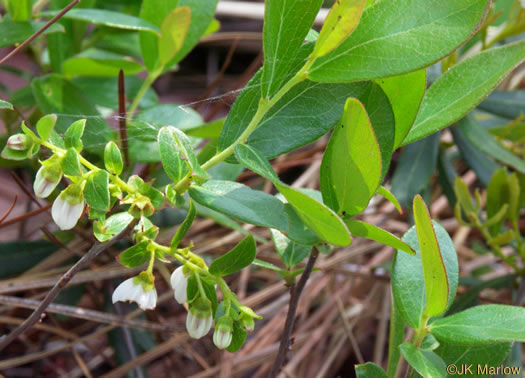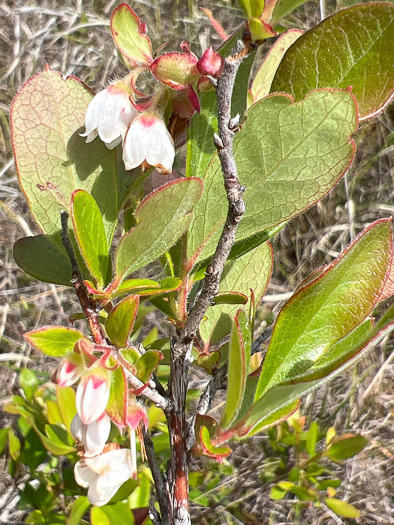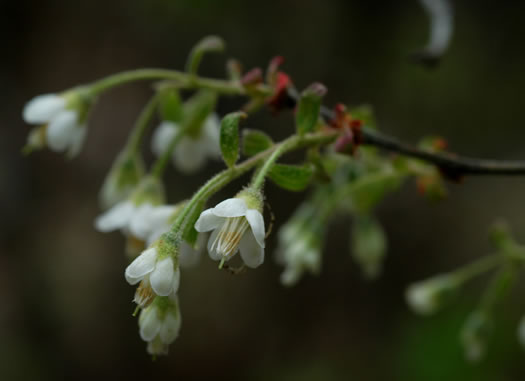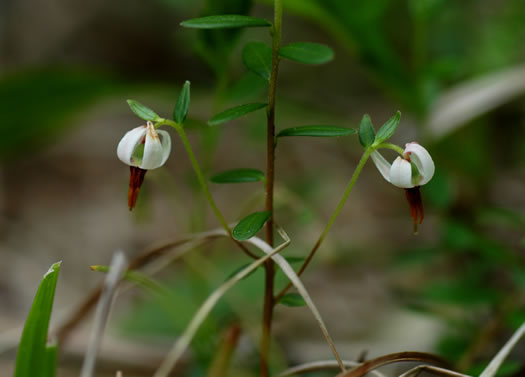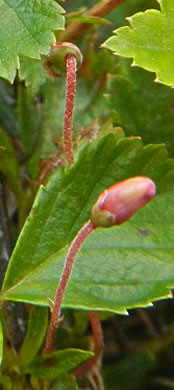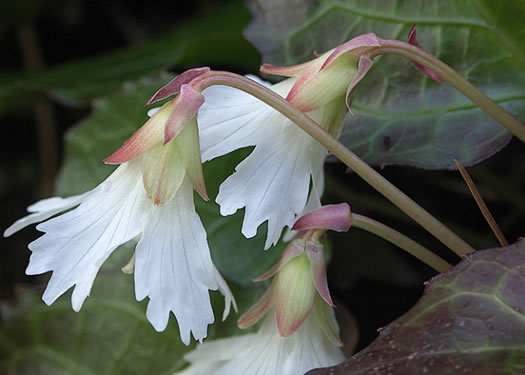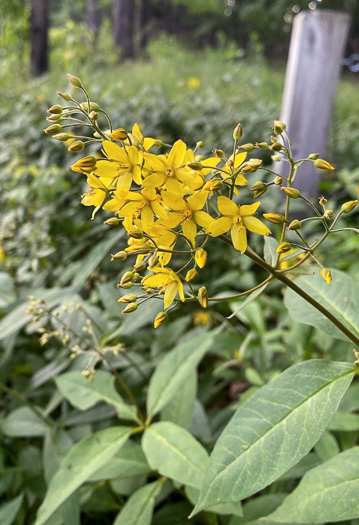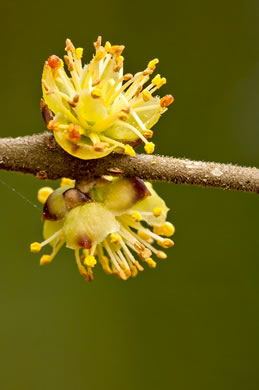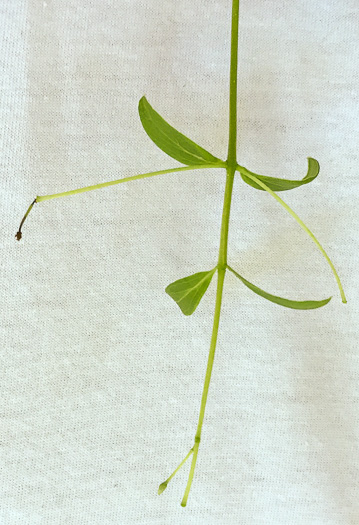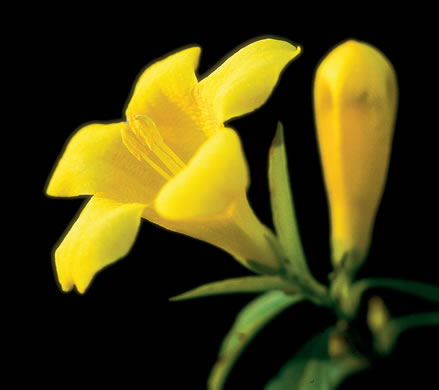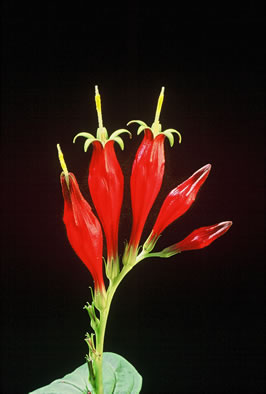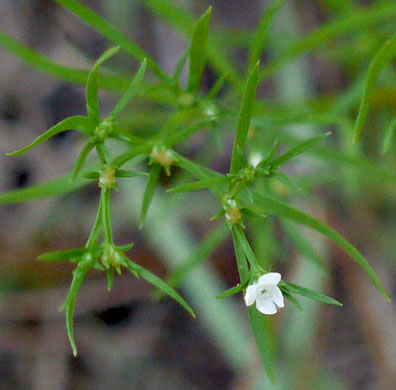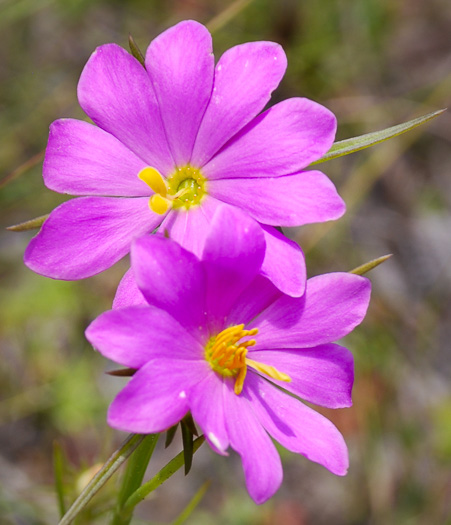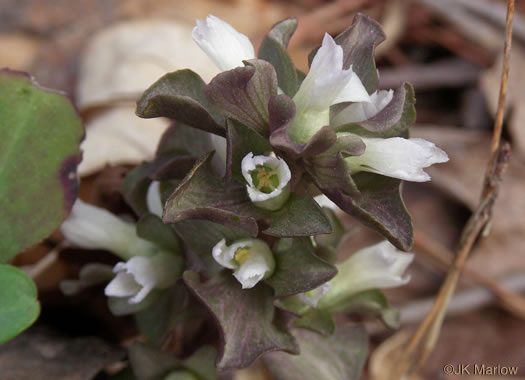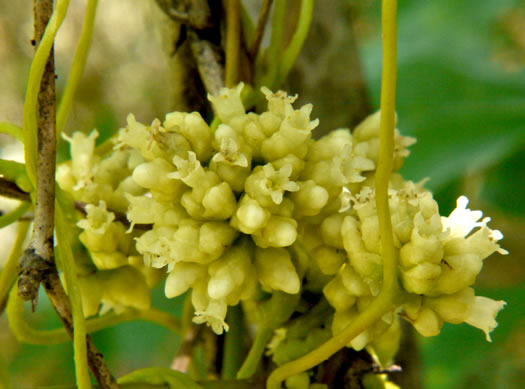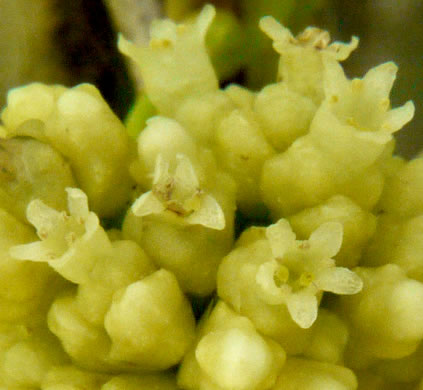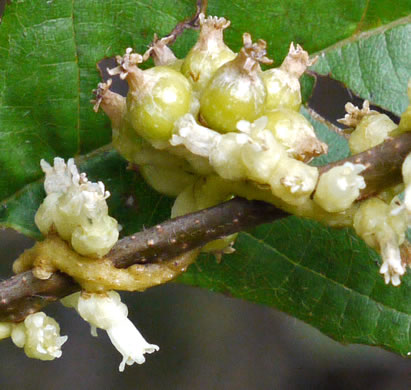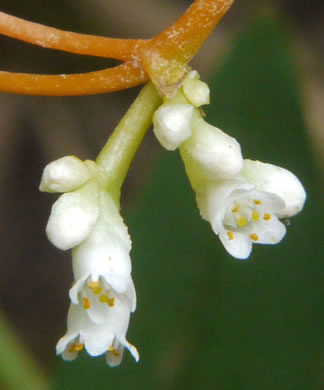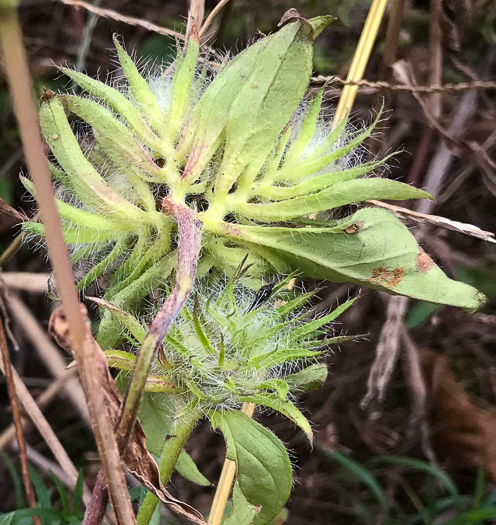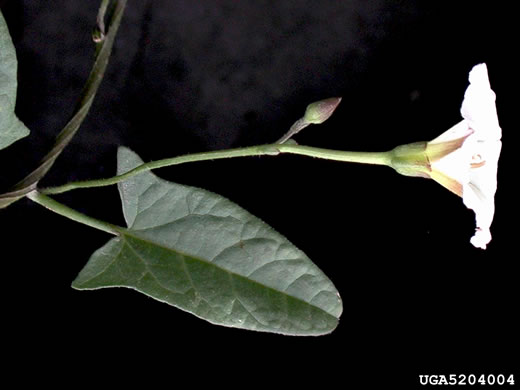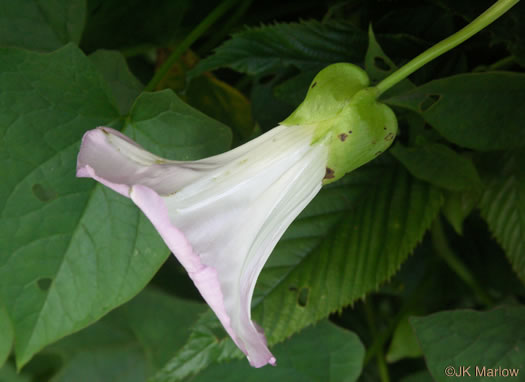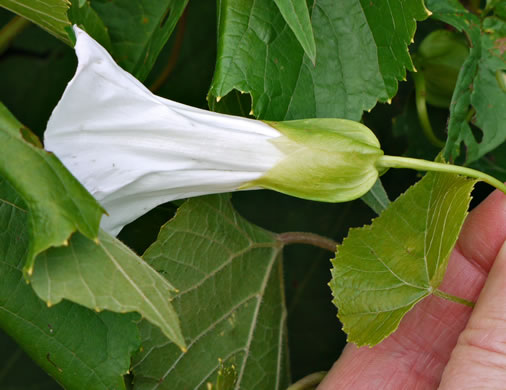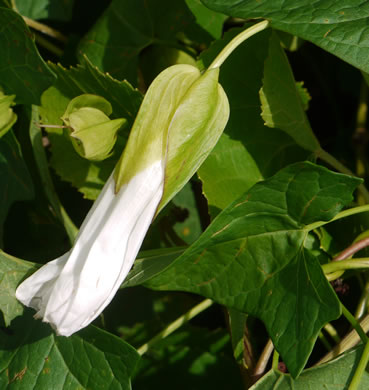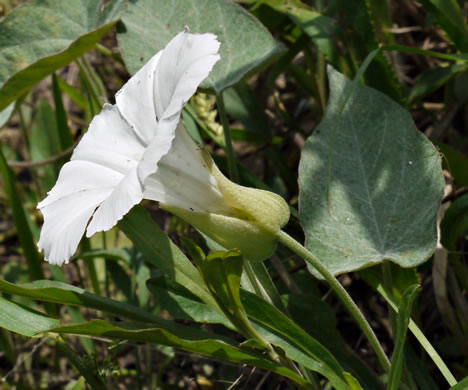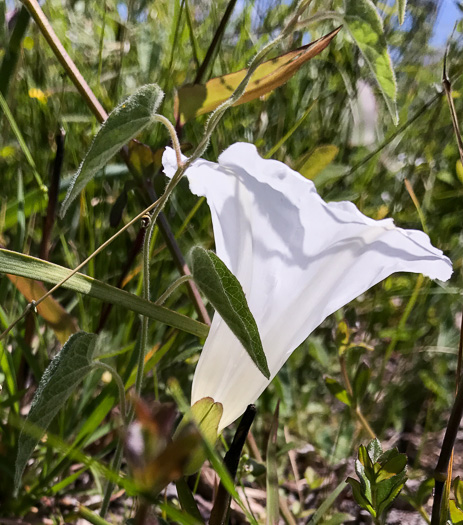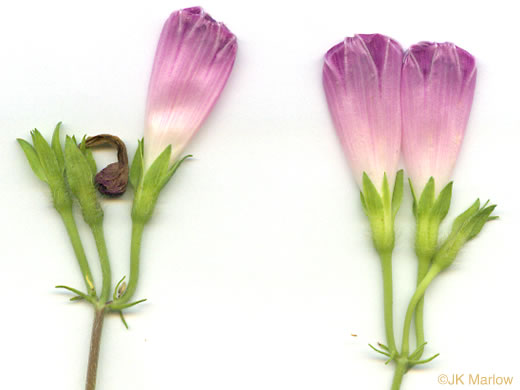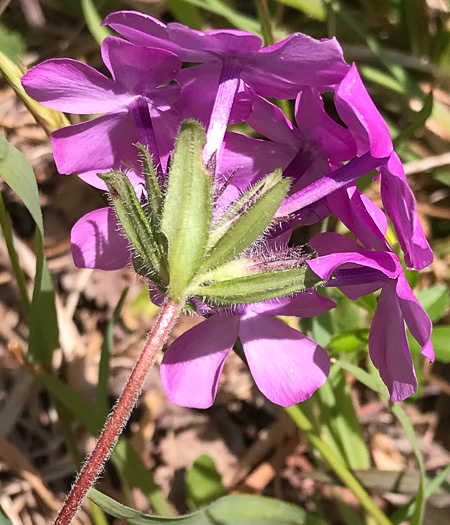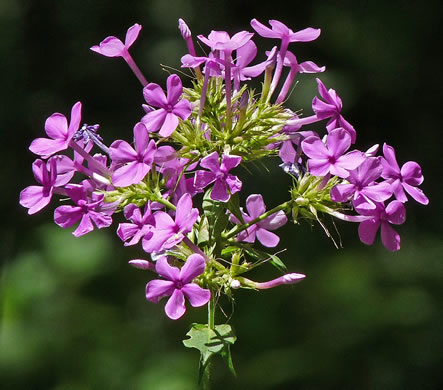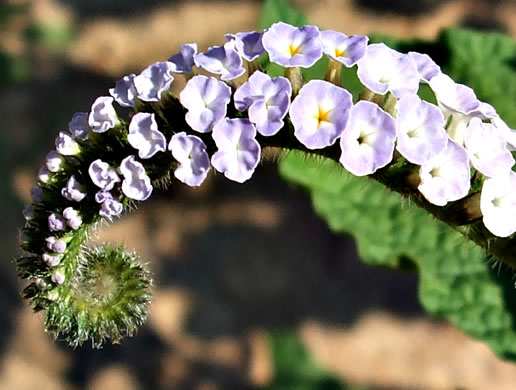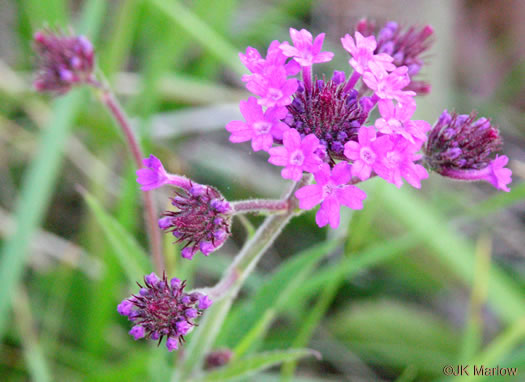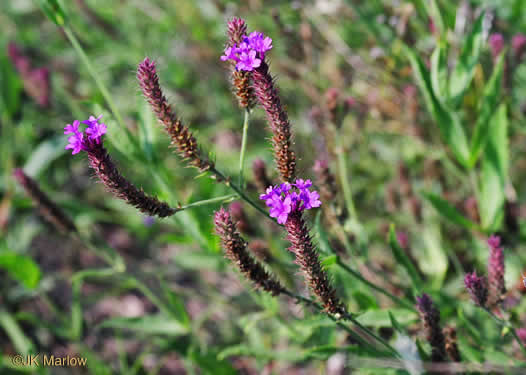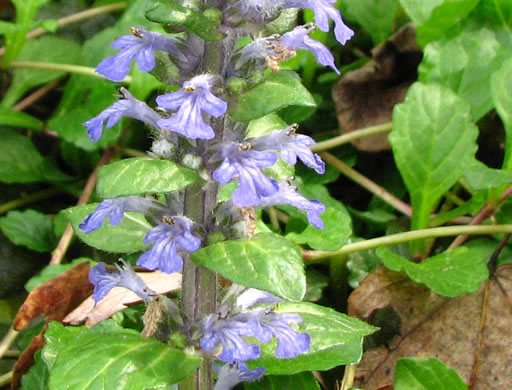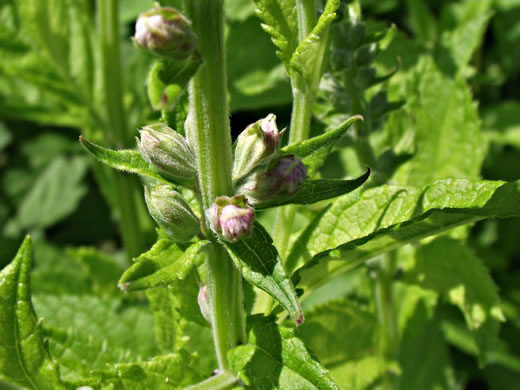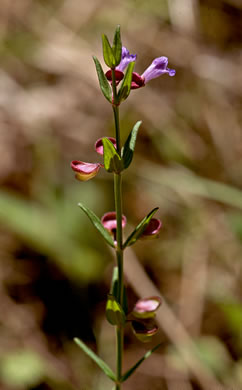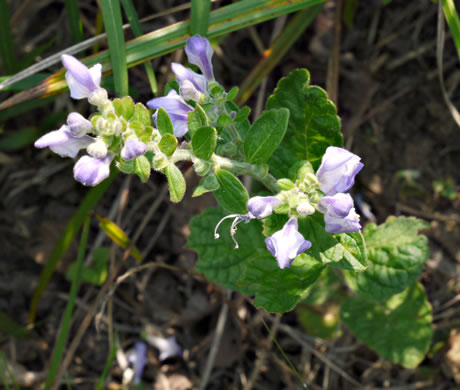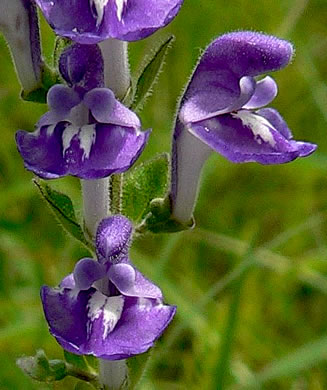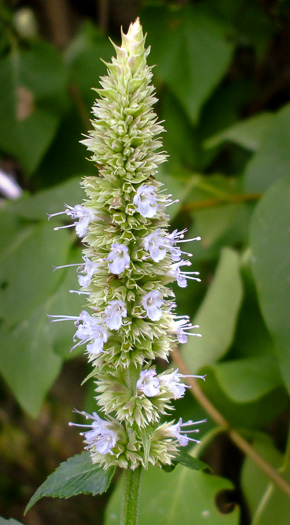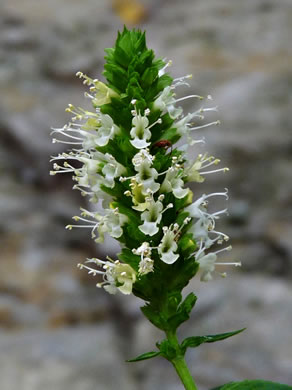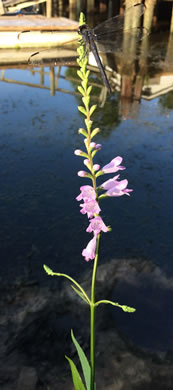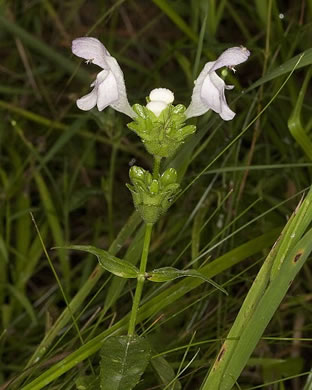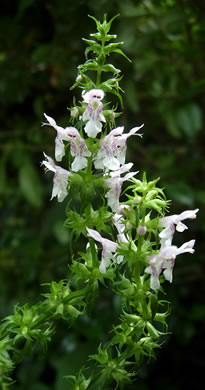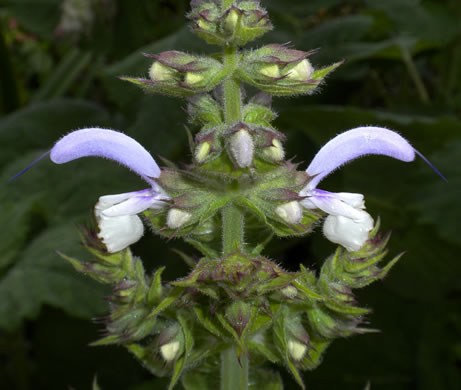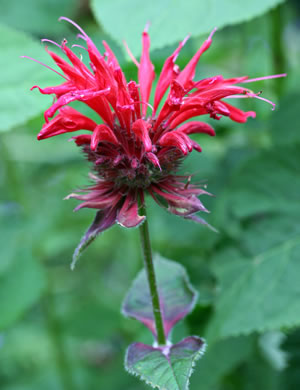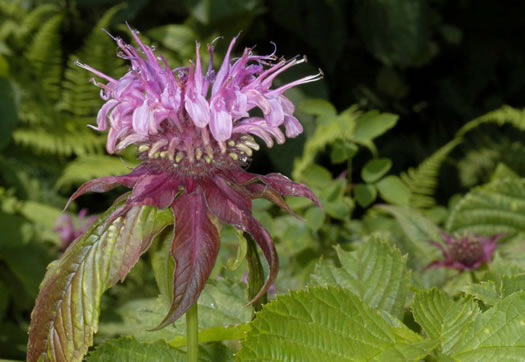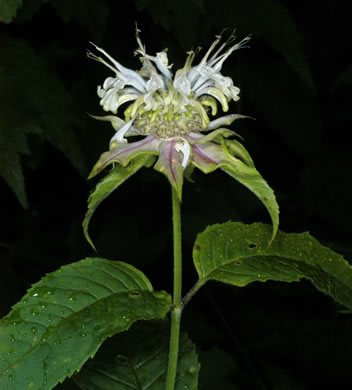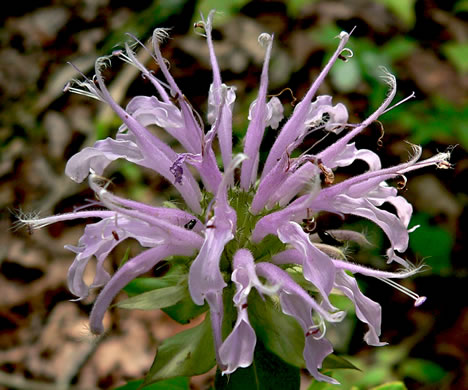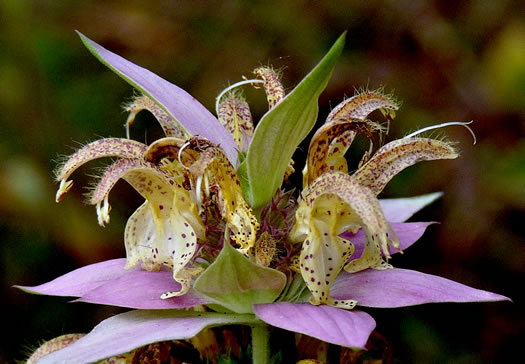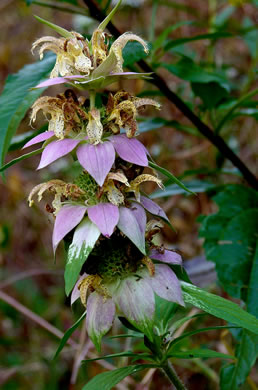Your search found 455 image(s) illustrating the term "bract." For a written explanation, click on "bract" in the Glossary.
PAGE 1 PAGE 2 PAGE 3 PAGE 4 PAGE 5 PAGE 6 PAGE 7 PAGE 8
To see larger pictures, click or hover over the thumbnails.
To go to the plant's detail page, click its name.
 Flowering Dogwood,
Benthamidia florida
Flowering Dogwood,
Benthamidia florida
Its true flowers are clustered in the center of white petal-like bracts, per Newcomb's Wildflower Guide (Newcomb, 1977).
 Kousa Dogwood,
Benthamidia japonica
Kousa Dogwood,
Benthamidia japonica
Creamy, white, taper-pointed bracts are the showy part of the inflorescence, per Manual of Woody Landscape Plants (Dirr, 1975+).
 Bunchberry,
Chamaepericlymenum canadense
Bunchberry,
Chamaepericlymenum canadense
Four large bracts surround a central cluster of 4-petaled yellowish flowers, per Wildflowers of the Southern Mountains (Smith, 1998).
 Red Osier Dogwood,
Swida sericea
Red Osier Dogwood,
Swida sericea
Leaves have 5-7 veins on each side, and the inflorescence lacks bracts, per Weakley's Flora (2015).
 Mountain Sweet-pepperbush,
Clethra acuminata
Mountain Sweet-pepperbush,
Clethra acuminata
Pedicels 2-6(-11)mm, stellate-hairy; bract longer than flower, per Flora of North America.
 Coastal Sweet-pepperbush,
Clethra alnifolia
Coastal Sweet-pepperbush,
Clethra alnifolia
Pedicels 2-4mm, shortly stellate-hairy; bract shorter than flower, per Flora of North America.
 Mountain Sweetbells,
Eubotrys recurvus
Mountain Sweetbells,
Eubotrys recurvus
Pedicels each with 2 bracteoles just below the calyx. Calyx lobes lanceolate, per Vascular Flora of the Carolinas (Radford, Ahles, & Bell, 1968).
 Southern Dwarf Huckleberry,
Gaylussacia dumosa
Southern Dwarf Huckleberry,
Gaylussacia dumosa
Racemes to 4cm long; raceme bracts foliaceous and longer than pedicels, per Native Shrubs and Woody Vines of the Southeast (Foote & Jones, 1989).
 Dangleberry,
Gaylussacia frondosa
Dangleberry,
Gaylussacia frondosa
Flowers greenish-white to pinkish, bracts small, stalks short-hairy, per Forest Plants of the Southeast and Their Wildlife Uses (Miller & Miller, 2005).
 Mosier's Huckleberry,
Gaylussacia mosieri
Mosier's Huckleberry,
Gaylussacia mosieri
Flowers in axillary, usually few-flowered, bracteate racemes on wood of the preceding season, per Aquatic & Wetland Plants of Southeastern US (Godfrey & Wooten, 1979 & 1981).
 Appalachian Deerberry,
Vaccinium stamineum var. 2
Appalachian Deerberry,
Vaccinium stamineum var. 2
Bracts of the inflorescence much smaller than normal foliage leaves, per Weakley's Flora.
 Southern Deerberry,
Vaccinium stamineum var. sericeum
Southern Deerberry,
Vaccinium stamineum var. sericeum
Bracts of the inflorescence much smaller than normal foliage leaves, per Weakley's Flora.
 Cranberry,
Vaccinium macrocarpon
Cranberry,
Vaccinium macrocarpon
Flowers solitary, axillary on old growth; each pedicel with 2 bracts, per Vascular Flora of the Carolinas (Radford, Ahles, & Bell, 1968).
 Small Cranberry,
Vaccinium oxycoccos
Small Cranberry,
Vaccinium oxycoccos
Pedicels 2-3cm, bracteolate or not; bracteoles 1-5, reddish, scalelike, per Flora of North America.
 Oconee Bells,
Shortia galacifolia
Oconee Bells,
Shortia galacifolia
Scapes with 3-5 bracts, these often closely subtending the calyx, per Vascular Flora of the Carolinas (Radford, Ahles, & Bell, 1968).
 Fraser's Loosestrife,
Lysimachia fraseri
Fraser's Loosestrife,
Lysimachia fraseri
Inflorescence a terminal panicle subtended by bracts much smallr than stem lvs, per Weakley's Flora.
 Swamp Candles,
Lysimachia terrestris
Swamp Candles,
Lysimachia terrestris
Flwrs in terminal raceme, all subtended by linear bracts smaller than stem lvs, per Weakley's Flora.
 Godfrey's Forestiera,
Forestiera godfreyi
Godfrey's Forestiera,
Forestiera godfreyi
Flowers subtended by 6 bracts, fringed apically; sepals mostly < 1mm, per Forestiera godfreyi (Oleaceae), a New Species from FL and SC (Anderson, 1985).
 Fringetree,
Chionanthus virginicus
Fringetree,
Chionanthus virginicus
Each panicle w tripartite branching & sometimes pairs of small leafy bracts, per www.illinoiswildflowers.info.
 Carolina Jessamine,
Gelsemium sempervirens
Carolina Jessamine,
Gelsemium sempervirens
Pedicels short, bracteate. Sepals lanceolate, separate to base, per Vascular Flora of the Carolinas (Radford, Ahles, & Bell, 1968).
 Indian-pink,
Spigelia marilandica
Indian-pink,
Spigelia marilandica
Inflorescence terminal, one or two ebracteate, spicate helicoid cymes, per Vascular Flora of the Carolinas (Radford, Ahles, & Bell, 1968).
 Juniperleaf,
Polypremum procumbens
Juniperleaf,
Polypremum procumbens
Flowers subtended by a pair of short leaflike bracts, per www.missouriplants.com (Tenaglia).
 Pinewoods Rose-gentian,
Sabatia gentianoides
Pinewoods Rose-gentian,
Sabatia gentianoides
A group of 1-5 flowers, sessile or subsessile. Linear bracts exceed corolla, per Guide to the Wildflowers of SC, 1st ed. (Porcher & Rayner, 2001).
 Cumberland Rose-gentian,
Sabatia capitata
Cumberland Rose-gentian,
Sabatia capitata
Each flower subtended by two 1-2cm long, oblong to elliptic bracts, per Gentians of the Eastern US (Drake, 2011).
 Pennywort,
Obolaria virginica
Pennywort,
Obolaria virginica
Flowers subtended by obovate, wedge-shaped greenish-purple bracts of leaves, per Gentians of the Eastern US (Drake, 2011).
 Compact Dodder,
Cuscuta compacta
Compact Dodder,
Cuscuta compacta
Flowers subtended by 1-10 bracts, per Key to the Dodders (Cuscuta, Convolvulaceae) of Alabama and Adjacent States (Spaulding, 2013).
 Compact Dodder,
Cuscuta compacta
Compact Dodder,
Cuscuta compacta
Bracts orbicular with rounded tips, imbricate, tightly subtending flower, per Key to the Dodders (Cuscuta, Convolvulaceae) of Alabama and Adjacent States (Spaulding, 2013).
 Compact Dodder,
Cuscuta compacta
Compact Dodder,
Cuscuta compacta
Bracts tightly appressed (vs. loose with recurved tips in C. glomerata), per Key to the Dodders (Cuscuta, Convolvulaceae) of Alabama and Adjacent States (Spaulding, 2013).
 Swamp Dodder,
Cuscuta gronovii var. gronovii
Swamp Dodder,
Cuscuta gronovii var. gronovii
Flowers not subtended by bracts (or occ. 1 bract). Sepals ~ united basally, per Key to the Dodders (Cuscuta, Convolvulaceae) of Alabama and Adjacent States (Spaulding, 2013).
 Common Jacquemontia,
Jacquemontia tamnifolia
Common Jacquemontia,
Jacquemontia tamnifolia
Inflorescence subtended by foliaceous bracts; sepals densely fulvous-hirsute, per Vascular Flora of the Carolinas (Radford, Ahles, & Bell, 1968).
 Field Bindweed,
Convolvulus arvensis
Field Bindweed,
Convolvulus arvensis
Smaller flowers than Calystegia and lacking its calyx-concealing bracts, per Wildflowers of Tennessee, the Ohio Valley, and the Southern Appalachians (Horn, Cathcart, Hemmerly, & Duhl, 2005).
 Appalachian Bindweed,
Convolvulus appalachianus
Appalachian Bindweed,
Convolvulus appalachianus
Here ssp. appalachiana has strongly keeled bracts with overlapping bases, per Key to the Bindweeds (Calystegia/Convolvulus, Convolvulaceae) of Alabama and adjacent states (Spaulding, 2013).
 Twin-flowered Bindweed,
Convolvulus fraterniflorus
Twin-flowered Bindweed,
Convolvulus fraterniflorus
Bracts distinctly overlap and conceal the majority of the sepals, per Key to the Bindweeds (Calystegia/Convolvulus, Convolvulaceae) of Alabama and adjacent states (Spaulding, 2013).
 Twin-flowered Bindweed,
Convolvulus fraterniflorus
Twin-flowered Bindweed,
Convolvulus fraterniflorus
Margins of bracts overlapping at least half their length, per Key to the Bindweeds (Calystegia/Convolvulus, Convolvulaceae) of Alabama and adjacent states (Spaulding, 2013).
 Blue Ridge Bindweed,
Convolvulus sericatus
Blue Ridge Bindweed,
Convolvulus sericatus
In the genus Calystegia, 2 large bracts below the calyx conceal the sepals, per Wildflowers of the Southern Mountains (Smith, 1998).
 Catesby's Bindweed,
Convolvulus catesbyanus
Catesby's Bindweed,
Convolvulus catesbyanus
Its large bracts almost hide sepals, per Key to the Bindweeds (Calystegia/Convolvulus, Convolvulaceae) of Alabama and adjacent states (Spaulding, 2013).
 Common Morning Glory,
Ipomoea purpurea
Common Morning Glory,
Ipomoea purpurea
Ipomoea has no bracts below calyx, whereas Calystegia and Convolvulus do, per Wildflowers of the Southern Mountains (Smith, 1998).
 Hairy Phlox,
Phlox amoena
Hairy Phlox,
Phlox amoena
Corollas subtended by stiff hairy 3/8" sepals and conspicuous floral bracts, per Atlantic Coastal Plain Wildflowers (Nelson, 2006).
 Broadleaf Phlox,
Phlox amplifolia
Broadleaf Phlox,
Phlox amplifolia
Broad open inflorescence w glandular hairy bracts and glabrous corolla tube, per Wildflowers of the Eastern United States (Duncan & Duncan, 1999).
 Indian Heliotrope,
Heliotropium indicum
Indian Heliotrope,
Heliotropium indicum
Flowers in simple, solitary, bractless, elongate, false, helicoid raceme, per Vascular Flora of the Carolinas (Radford, Ahles, & Bell, 1968).
 Stiff Verbena,
Verbena rigida
Stiff Verbena,
Verbena rigida
Funnelform flower 2.5x longer than the hairy calyx and subtending bract, per Forest Plants of the Southeast and Their Wildlife Uses (Miller & Miller, 2005).
 Stiff Verbena,
Verbena rigida
Stiff Verbena,
Verbena rigida
Flowers with hairy bracts crowded into slender terminal spikes, per Forest Plants of the Southeast and Their Wildlife Uses (Miller & Miller, 2005).
 Carpet Bugle,
Ajuga reptans
Carpet Bugle,
Ajuga reptans
Thyrse leafy-bracteate, cymules sessile, 3-5 flowered; bracts reduced upward, per Vascular Flora of the Carolinas (Radford, Ahles, & Bell, 1968).
 American Germander,
Teucrium canadense var. canadense
American Germander,
Teucrium canadense var. canadense
Bracts shorter than, to slightly exceeding, calyx, the very lowest leaf-like, per Vascular Flora of the Carolinas (Radford, Ahles, & Bell, 1968).
 Shale-barren Skullcap,
Scutellaria leonardii
Shale-barren Skullcap,
Scutellaria leonardii
Flowers axillary, corolla 6.5-9mm long; bracts resembling stem leaves, per Weakley's Flora (2012).
 Hairy Skullcap,
Scutellaria elliptica var. elliptica
Hairy Skullcap,
Scutellaria elliptica var. elliptica
Bracts reduced upward, per Vascular Flora of the Carolinas (Radford, Ahles, & Bell, 1968).
 Kentucky Skullcap,
Scutellaria elliptica var. hirsuta
Kentucky Skullcap,
Scutellaria elliptica var. hirsuta
Bracts reduced (not leaf-like); corollas 14-18(-21)mm, per Weakley's Flora (2012).
 Purple Giant-hyssop,
Agastache scrophulariifolia
Purple Giant-hyssop,
Agastache scrophulariifolia
Flowers and small pinkish-white bracts densely packed in 6" terminal spikes, per Wildflowers of the Atlantic Southeast (Cotterman, Waitt, & Weakley, 2019).
 Yellow Giant-hyssop,
Agastache nepetoides
Yellow Giant-hyssop,
Agastache nepetoides
Bracts in the flower spike are green (vs. pinkish in A. scrophulariifolia), per Field Guide to the Rare Plants of Georgia (Chafin, 2007).
 Tidal Marsh Obedient-plant,
Physostegia leptophylla
Tidal Marsh Obedient-plant,
Physostegia leptophylla
Uppermost leaves below terminal raceme usually much larger than floral bracts, per Weakley's Flora.
 Carolina Birds-in-a-nest,
Macbridea caroliniana
Carolina Birds-in-a-nest,
Macbridea caroliniana
Overlapping nestlike bracts subtending the flowers give it its common name, per Atlantic Coastal Plain Wildflowers (Nelson, 2006).
 Carolina Hedgenettle,
Stachys caroliniana
Carolina Hedgenettle,
Stachys caroliniana
Bracts reduced upward, lowest lanceolate, progressively trullate to ovate, per A new hedge-nettle (Stachys: Lamiaceae) from SC (Nelson & Rayner, 2014).
 Smooth Hedgenettle,
Stachys tenuifolia
Smooth Hedgenettle,
Stachys tenuifolia
Bracts of the inflorescence inconspicuous, rapidly reduced upward, per Weakley's Flora.
 Europe sage,
Salvia sclarea
Europe sage,
Salvia sclarea
Bracts or floral lvs large, cuspidate, as long as or longer than flowers, per Flora of Pakistan.
 Scarlet Beebalm,
Monarda didyma
Scarlet Beebalm,
Monarda didyma
Showy reddish bracts, per Wildflowers of Tennessee, the Ohio Valley, and the Southern Appalachians (Horn, Cathcart, Hemmerly, & Duhl, 2005).
 Purple Beebalm,
Monarda media
Purple Beebalm,
Monarda media
Deep reddish purple flowers and dark purple floral bracts, per Wildflowers of Tennessee, the Ohio Valley, and the Southern Appalachians (Horn, Cathcart, Hemmerly, & Duhl, 2005).
 Basil Bergamot,
Monarda clinopodia
Basil Bergamot,
Monarda clinopodia
Outer subtending bracts green or pale (rarely with a purplish midvein), per Weakley's Flora.
 Wild Bergamot,
Monarda fistulosa +
Wild Bergamot,
Monarda fistulosa +
Outer bracts green or reddish, depending on variety, per Weakley's Flora (2012).
 Eastern Horsemint,
Monarda punctata var. punctata
Eastern Horsemint,
Monarda punctata var. punctata
Pale yellow petals with dark purple spots nearly overshadowed by the bracts, per Atlantic Coastal Plain Wildflowers (Nelson, 2006).
 Eastern Horsemint,
Monarda punctata var. punctata
Eastern Horsemint,
Monarda punctata var. punctata
Large, leaflike, showy, pink-to-lavender subtending bracts, per Atlantic Coastal Plain Wildflowers (Nelson, 2006).

